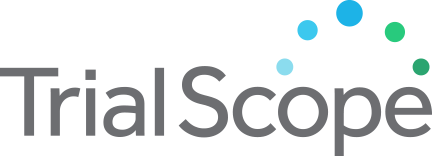CPAP in Treating Obstructive Sleep Apnea in Patients With Polycythemia Vera or Essential Thrombocythemia
Study Purpose
This early phase I trial studies how well the use of a continuous positive airway pressure (CPAP) machine works in treating obstructive sleep apnea in patients with polycythemia vera or essential thrombocythemia. Obstructive sleep apnea is a condition where a person stops breathing during sleep, and is estimated to affect 30 to 50 percent of patients with polycythemia vera or essential thrombocythemia. A patient with obstructive sleep apnea typically snores, has disrupted sleep, experiences morning headaches, and has daytime sleepiness. Patients diagnosed with obstructive sleep apnea are typically treated with a device called CPAP. The CPAP provides pressurized air that keeps upper air passages open during sleep and may prevent them from narrowing or collapsing as occurs during snoring or sleep apnea.
Recruitment Criteria
|
Accepts Healthy Volunteers
Healthy volunteers are participants who do not have a disease or condition, or related conditions or symptoms |
No |
|
Study Type
An interventional clinical study is where participants are assigned to receive one or more interventions (or no intervention) so that researchers can evaluate the effects of the interventions on biomedical or health-related outcomes. An observational clinical study is where participants identified as belonging to study groups are assessed for biomedical or health outcomes. Searching Both is inclusive of interventional and observational studies. |
Interventional |
| Eligible Ages | 30 Years - 85 Years |
| Gender | All |
Trial Details
|
Trial ID:
This trial id was obtained from ClinicalTrials.gov, a service of the U.S. National Institutes of Health, providing information on publicly and privately supported clinical studies of human participants with locations in all 50 States and in 196 countries. |
NCT03972943 |
|
Phase
Phase 1: Studies that emphasize safety and how the drug is metabolized and excreted in humans. Phase 2: Studies that gather preliminary data on effectiveness (whether the drug works in people who have a certain disease or condition) and additional safety data. Phase 3: Studies that gather more information about safety and effectiveness by studying different populations and different dosages and by using the drug in combination with other drugs. Phase 4: Studies occurring after FDA has approved a drug for marketing, efficacy, or optimal use. |
Early Phase 1 |
|
Lead Sponsor
The sponsor is the organization or person who oversees the clinical study and is responsible for analyzing the study data. |
University of Utah |
|
Principal Investigator
The person who is responsible for the scientific and technical direction of the entire clinical study. |
Krishna Sundar |
| Principal Investigator Affiliation | Huntsman Cancer Institute/ University of Utah |
|
Agency Class
Category of organization(s) involved as sponsor (and collaborator) supporting the trial. |
Other, NIH |
| Overall Status | Recruiting |
| Countries | United States |
|
Conditions
The disease, disorder, syndrome, illness, or injury that is being studied. |
CALR Gene Mutation, Essential Thrombocythemia, JAK2 Gene Mutation, MPL Gene Mutation, Obstructive Sleep Apnea Syndrome, Polycythemia Vera |
Contact a Trial Team
If you are interested in learning more about this trial, find the trial site nearest to your location and contact the site coordinator via email or phone. We also strongly recommend that you consult with your healthcare provider about the trials that may interest you and refer to our terms of service below.

